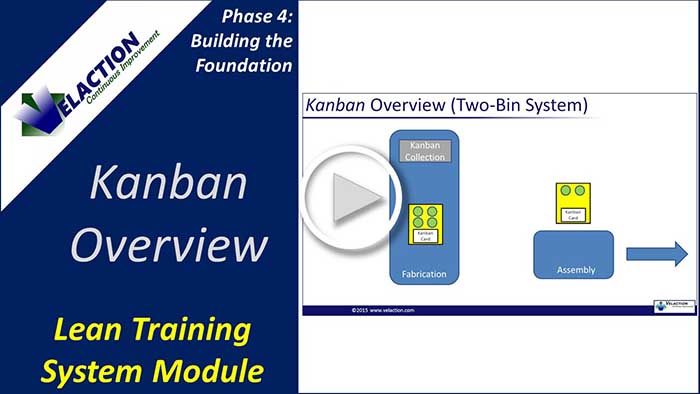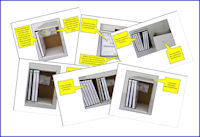| 🔍 > Lean Terms Directory |
Two-Bin System (Kanban)
A two-bin system is a kanban method used to simplify replenishment on a production line.
The process is simple. An operator pulls from one bin until it is empty, and then, depending on how the kanban card is attached, either turns in the kanban card (if fastened by hook and pile), or turns in the whole bin (if the card is permanently fixed).
The operator then pulls from the second bin while the order is placed for materials to fill the first bin. If all goes well, the first bin is filled and replaced when there are a few items left in the second bin.
The two-bin system is generally designed with a bit of safety stock, hence those extra parts. If things don’t go well, the safety stock is used while the delays are resolved. The bigger the potential for problems, the larger the safety stock.
 Watch Our Kanban Overview Video
Watch Our Kanban Overview Video

A two-bin system is the most common form of kanban you will likely see. Parts using more than two kanbans are possible but are generally used for local replenishment or for special situations.
Two-Bin System Rules
There are two basic protocols for two-bin systems.
There is “break a bin, turn it in”, and “empty bin, turn it in”.
In the first case, as expected, the operator drops the card when the first item is taken. The advantage is slightly smaller bin quantities, since the order is placed earlier.
In the second case, dropping the bin when empty, there is less chance of confusion. Every bin should have a card on it. If you don’t see a card, you know there is a problem. With “break a bin”, you will have bins without cards, so it is harder to do quick visual audits. There is higher likelihood that a card was misplaced and not noticed.
I generally recommend using the empty bin method. The extra inventory is generally not prohibitively much, and if it is, you can reduce it by adding more bins instead of the two-bin system.
Using empty bins makes things consistent. You may use some permanently marked bins as kanbans to restock from a warehouse location. Some bins or carts may be pull signals for upstream processes. You will seldom see a card attached to a custom parts cart that gets pulled and dropped separately.
The more consistent you can make your operation, the smoother things will flow.

0 Comments